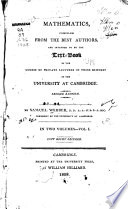 | Samuel Webber - Mathematics - 1808 - 466 pages
...and all the rest, or the known quantities, on the other side. RULE 1.* Any quantity may be transposed from one side of the equation to the other, by changing its sign. * These are founded on the general principle of performing equal operations on equal quantities, \vhen... | |
 | Nicolas Pike - Algebra - 1808 - 470 pages
...the unknown quantity, which is shewn in the following rules. RULE 1. Any quantity may be transposed from one side of the equation to the other, by changing its sign. Thus, if H-3=7, then will r=7— 3=4. And, if r— 4+6=8, then will r=8+4 — 6=6. Also, if r — a+£=*r... | |
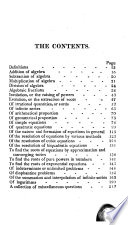 | John Bonnycastle - Algebra - 1811 - 230 pages
...the unknown quantity, which is shown in the following rules. RULE I. Any quantity may be transposed from one side of the equation to the other by changing its sign. Thus, ifx-\-3=7, then will x = 7 — 3 = 4. And, if x — 4 + 6 = 8, then will * = 8 + 4 — 6 = 6.... | |
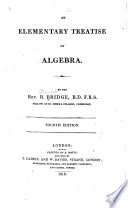 | Bewick Bridge - Algebra - 1818 - 254 pages
...arranged in the following order. RULE I. The first rule is, that " any quantity may be transferred from '• one side of the equation to the other, by changing its sign ;" and it is founded upon the axiom, that " if equals be added to *' or subtracted from equals, the... | |
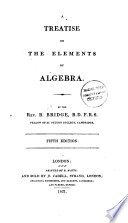 | Bewick Bridge - Algebra - 1821 - 648 pages
...be arranged in the following order. RULE I. The first rule is, that "any quantity may be transferred from "one side of the equation to the other, by changing its sign ;" and and it is founded upon the axiom, that " if equals be added to " or subtracted from equals,... | |
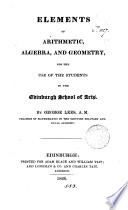 | George Lees - 1826 - 276 pages
...3d, - 3* — 6 = 2.r+2, - - Sx— 2*= 2 + 6. Hence it follows, that any quantity may be transferred from one side of the equation to the other by changing its sign. In the first of the above examples, it is manifest that x = 7 ; in the second x = 16 ; and, in the... | |
 | Alexander Ingram - Mathematics - 1830 - 458 pages
...divisor. In this way the equation may be cleared of fractions. RULE 2. — Any term may be transposed from one side of the equation to the other, by changing its sign from + to — , or from — to -(-. In this way the terms containing the unknown quantity may be brought... | |
 | Augustus De Morgan - 1831 - 108 pages
...language, if a=d a+ o = b + c, uc = b-cac = bc and ab - = -• In every elementary book it is stated that any quantity may be removed from one side of the equation to the other, provided its sign be changed. This is nothing but an application of the principle just stated, as may... | |
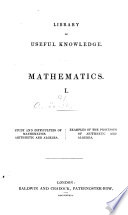 | Mathematics - 1836 - 352 pages
...language, if a = 6 a+ c=b + c, ac = b — cac = bc and — = -. In every elementary book it is stated that any quantity may be removed from one side of the equation to the other, provided its sign be changed. This is nothing but an application of the principle just stated, as may... | |
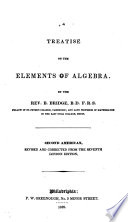 | Bewick Bridge - Algebra - 1839 - 280 pages
...arranged in the following order. RULE I. The first Rule is, that " any. quantity may be transferred from one side of the equation to the other, by changing its sign ;" and it is founded upon the axiom, " if equals be added to or subtracted from equals, the sums or... | |
| |